Where are the best sources to go to find out what those "spots" are? In other words, if one doesn't have a lot of experience in diagnosing small bumps or spots on a fish, where is the best place to try and find out what they are. I have a number of Wide Bars and some have small brown bumps. I have treated the fish with everything under the sun and nothing seems to affect these bumps. But perhaps these bumps are natural??? how would I know? Fish seem to be just fine. Also, they have been together with other fish for some time now (6 mo) and no other fish gets bumps like these. Also, amongst the other Wide Bars in the tank, others don't have a single bump nor do they show any signs. These fish are in a 50 Gallon right now, each fish is between 4-6 inches. Lately there are more bumps forming in the fins, but not sure what they are. If anyone has any ideas, I'm all ears.
Resources for diagnosis
- Thread starter FishEZ
- Start date
-
- Tags
- disease identification lumps spots
You are using an out of date browser. It may not display this or other websites correctly.
You should upgrade or use an alternative browser.
You should upgrade or use an alternative browser.
You will probably need to post some pics to get much of a diagnosis. There is a minimum post requirement before you can add images. You will also probably be asked about your water parameters. Posting readings for ammonia, nitrite, nitrate, and temp will be helpful.
Yes, you are correct. I am aware that I need to post some additional information but I thought I couldn't do so until I've posted more because they have a limitation on new members. I will post some photos as soon as I can.You will probably need to post some pics to get much of a diagnosis. There is a minimum post requirement before you can add images. You will also probably be asked about your water parameters. Posting readings for ammonia, nitrite, nitrate, and temp will be helpful.
Where are the best sources to go to find out what those "spots" are? In other words, if one doesn't have a lot of experience in diagnosing small bumps or spots on a fish, where is the best place to try and find out what they are. I have a number of Wide Bars and some have small brown bumps. I have treated the fish with everything under the sun and nothing seems to affect these bumps. But perhaps these bumps are natural??? how would I know? Fish seem to be just fine. Also, they have been together with other fish for some time now (6 mo) and no other fish gets bumps like these. Also, amongst the other Wide Bars in the tank, others don't have a single bump nor do they show any signs. These fish are in a 50 Gallon right now, each fish is between 4-6 inches. Lately there are more bumps forming in the fins, but not sure what they are. If anyone has any ideas, I'm all ears.
Here are photos of the fish when they were received in April. It hasn't changed since then other than the fact that the fish are growing much larger. The fish are in a 50 G right now but had them in a 75G community tank before. The spots seem to be only on certain ones of the nine in total and I have not observed any jumping of spots from fish to fish. Nor do the spots seem to be multiplying although I've had a tough time determining if the spots are moving about on the fish. I may have to take more photos to know that.
The water parameters are that I change 60% 2 or 3 times per week using RO water. I keep them extremely clean. The tank has a canister filter that is overrated and I have a power-head in the tank. I do not use carbon in the canister filter because I keep everything so clean and water is changed so often that there isn't any real need for it. Actually, it's only a hindrance because I have to remove it from my tanks when any type of treatment goes on. On these fish, they were quarantined for some time and were given every kind of parasite treatment known, including those for worms. None of them had any effect.
The business that I got the fish from apologized after I got them and said that they were grub worms and that they will naturally disappear after about 2 years. I don't know how true that is.
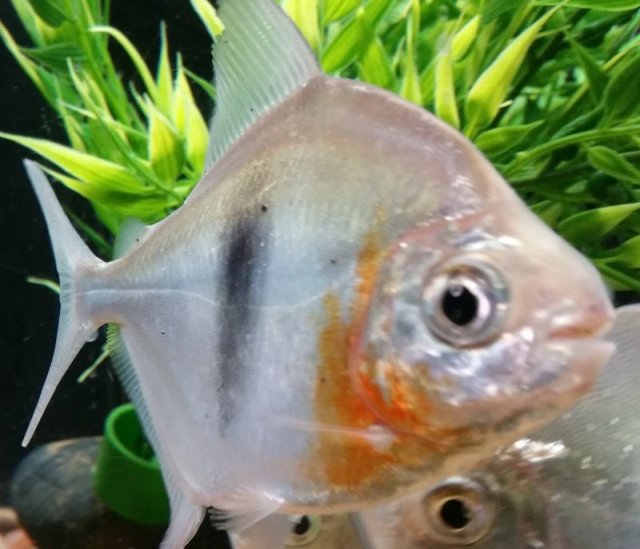
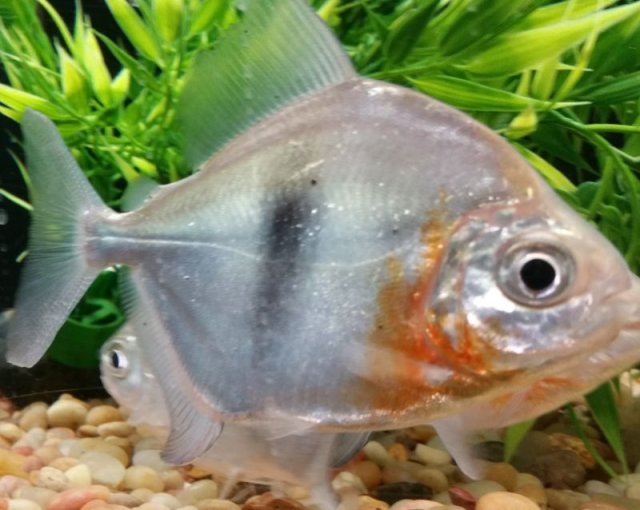
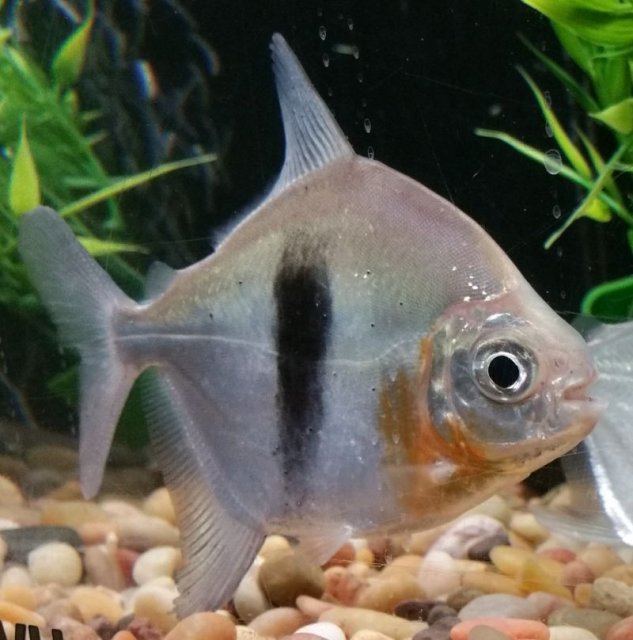
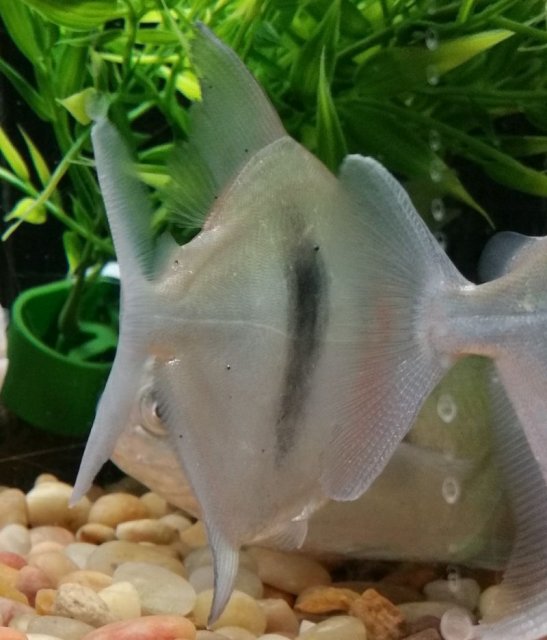
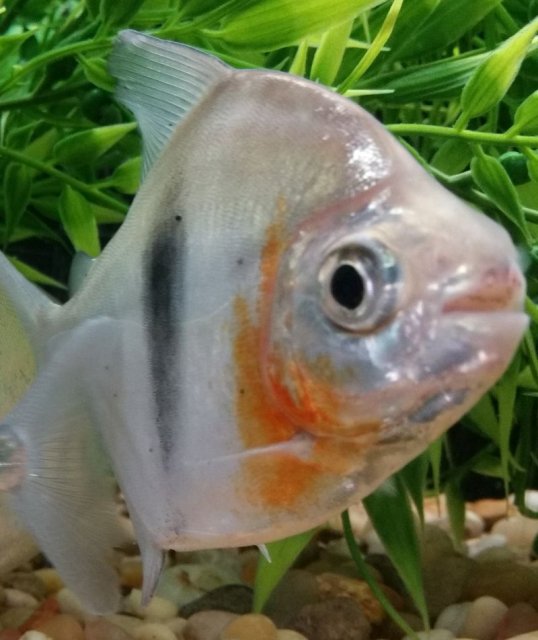
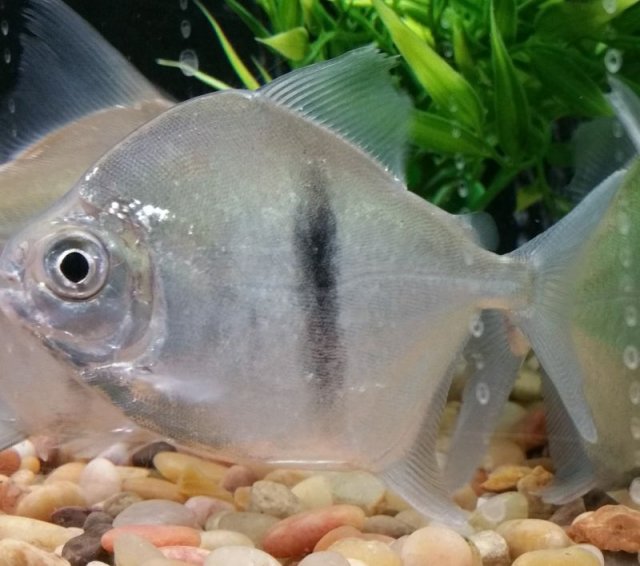
Your thoughts appreciated.
Here are photos of the fish when they were received in April. It hasn't changed since then other than the fact that the fish are growing much larger. The fish are in a 50 G right now but had them in a 75G community tank before. The spots seem to be only on certain ones of the nine in total and I have not observed any jumping of spots from fish to fish. Nor do the spots seem to be multiplying although I've had a tough time determining if the spots are moving about on the fish. I may have to take more photos to know that.
The water parameters are that I change 60% 2 or 3 times per week using RO water. I keep them extremely clean. The tank has a canister filter that is overrated and I have a power-head in the tank. I do not use carbon in the canister filter because I keep everything so clean and water is changed so often that there isn't any real need for it. Actually, it's only a hindrance because I have to remove it from my tanks when any type of treatment goes on. On these fish, they were quarantined for some time and were given every kind of parasite treatment known, including those for worms. None of them had any effect.
The business that I got the fish from apologized after I got them and said that they were grub worms and that they will naturally disappear after about 2 years. I don't know how true that is.






Your thoughts appreciated.
I would guess black spot disease which is caused by the larvae of a flatworm. I don't think it is very common in aquarium fish because its life cycle is complicated and involves birds.
"What is it?
Black Spot is actually the larvae of a parasite. It is often brought into the aquarium by new fish or snails. The parasite has a quite complex lifecycle- and would be very lucky indeed to actually complete it! It starts out (if a life cycle can start…) with snails. Eggs of the parasite in the water of creeks or rivers hatch and infect snails. Inside the liver of the snail they slowly develop, until eventually leaving the snail to find a fish. When they find a fish the larvae burrow under a scale in the fishes skin (causing much irritation to the fish). The parasites then hope the fish will be eaten by a bird or other animal so that the lifecycle can continue. When they are eaten they quickly mature in the intestines of the host animal and produce large numbers of eggs. These eggs are then excreted, making their way back to the water of a creek or river. And the cycle continues!
However, if a fish in an aquarium is infected, the parasites are out of luck! Their lifecycle comes to an abrupt stop as there are no birds or animals to eat them."
http://www.angelfire.com/blues/fish_problems/BLACKSPOT.html
According to this write up remove any snails and wait. Two years sounds like a very long time for the parasite to live, but while it is encysted and attached to the fish medication probably will not touch it. I did not see any references to higher temperature speeding up the life cycle like with ick. Hopefully someone with more experience will come along and take a look at the photos. Drstrangelove
Drstrangelove
 Rocksor
Rocksor
 RD.
RD.
"What is it?
Black Spot is actually the larvae of a parasite. It is often brought into the aquarium by new fish or snails. The parasite has a quite complex lifecycle- and would be very lucky indeed to actually complete it! It starts out (if a life cycle can start…) with snails. Eggs of the parasite in the water of creeks or rivers hatch and infect snails. Inside the liver of the snail they slowly develop, until eventually leaving the snail to find a fish. When they find a fish the larvae burrow under a scale in the fishes skin (causing much irritation to the fish). The parasites then hope the fish will be eaten by a bird or other animal so that the lifecycle can continue. When they are eaten they quickly mature in the intestines of the host animal and produce large numbers of eggs. These eggs are then excreted, making their way back to the water of a creek or river. And the cycle continues!
However, if a fish in an aquarium is infected, the parasites are out of luck! Their lifecycle comes to an abrupt stop as there are no birds or animals to eat them."
http://www.angelfire.com/blues/fish_problems/BLACKSPOT.html
According to this write up remove any snails and wait. Two years sounds like a very long time for the parasite to live, but while it is encysted and attached to the fish medication probably will not touch it. I did not see any references to higher temperature speeding up the life cycle like with ick. Hopefully someone with more experience will come along and take a look at the photos.
I would guess black spot disease which is caused by the larvae of a flatworm. I don't think it is very common in aquarium fish because its life cycle is complicated and involves birds.
Many thanks for your thoughts. The ones who sold me the fish told me the same thing as this page does regarding the flatworm but they called it a yellow grub instead. I imagine that this is the same thing under a different name.
I failed to mention that the previous photos in this post show the fish when they were first received and in quarantine. The last photo was an example of one of the fish without any brown spots. Originally, I used some river gravel and plastic plants to give them a sense of security since they were quite skittish. Now they are housed in this tank and they are doing just fine. To help with their skittish behavior, I added 13 young 2" Filament barbs which gives the tank more of a community feel since taking this photo.
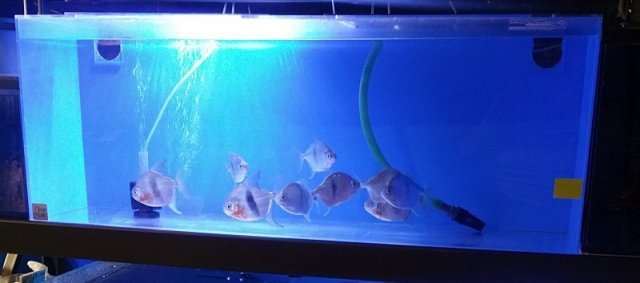
Last edited:
One of my favorites books for diagnosing any fish disease is the "Self Assessment Color Review of OrnamentalFish" by Gregory Lewbart MS, VMD, Iowa State University Press.
It has many photos of fish maladies, and is set up as a case study with a question and answer format text book for student veterinarians. Almost 300 different case studies.
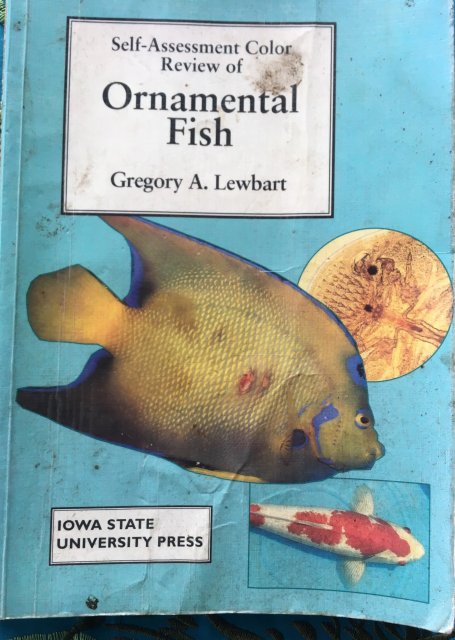
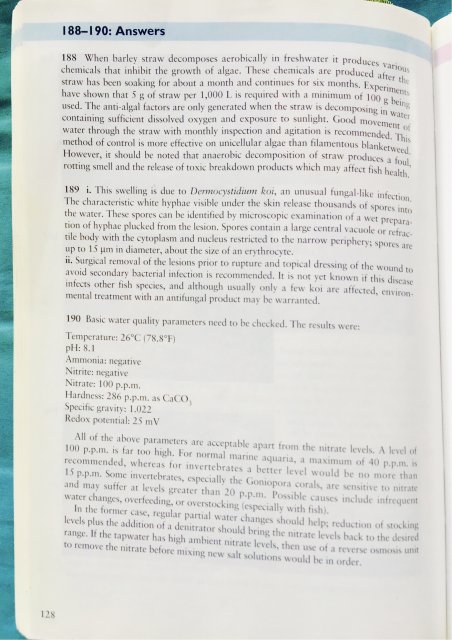
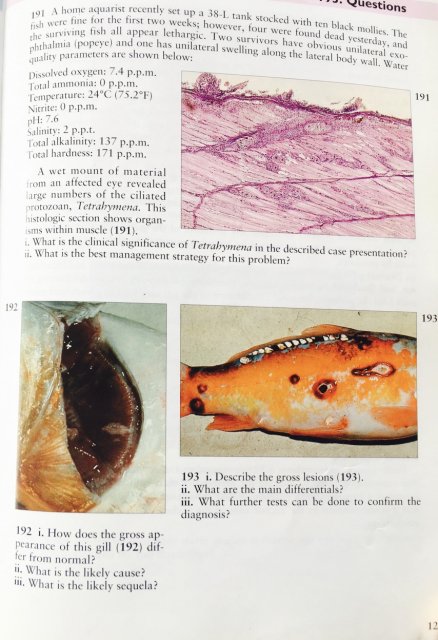
It has many photos of fish maladies, and is set up as a case study with a question and answer format text book for student veterinarians. Almost 300 different case studies.





